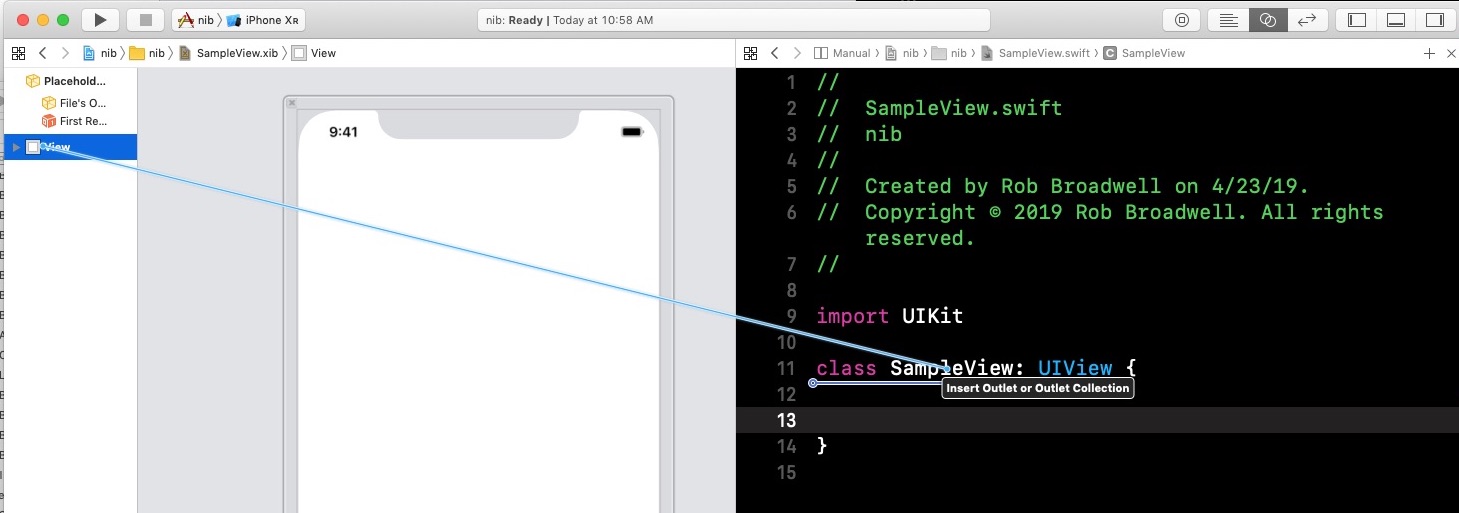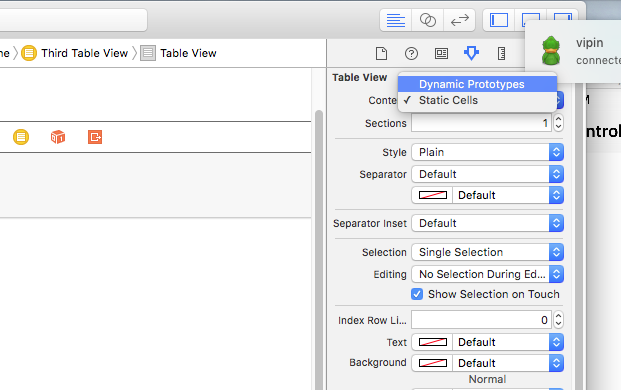I added a new nib file to my project, and tried to load it.
However, when I click on the toolbar icon that is supposed to take me to the view that I created, I get an NSInternalInconsistencyException with the message:
Terminating app due to uncaught exception 'NSInternalInconsistencyException', reason: '-[UIViewController _loadViewFromNibNamed:bundle:] loaded the "..." nib but the view outlet was not set.'
So I opened up my nib file, and I see for the view that there are no referencing outlets set. However, I try to click and drag the circle for "new referencing outlet" to File's Owner, but it won't let me...what do I need to do to get my view to display?









